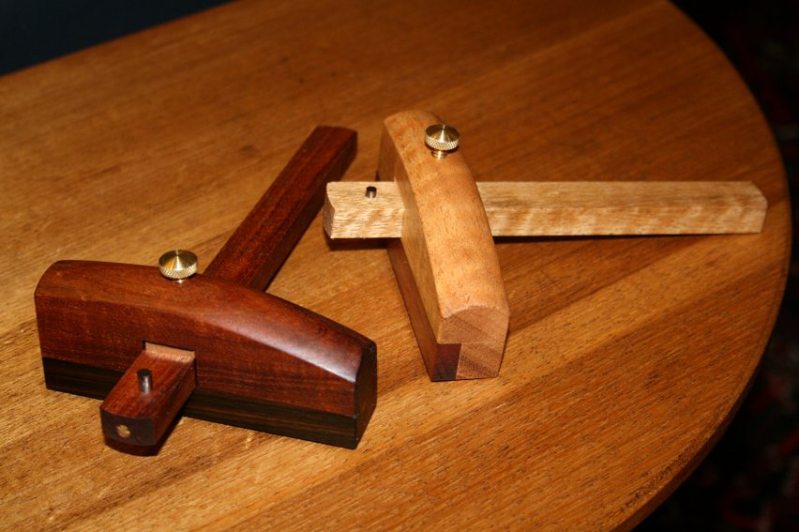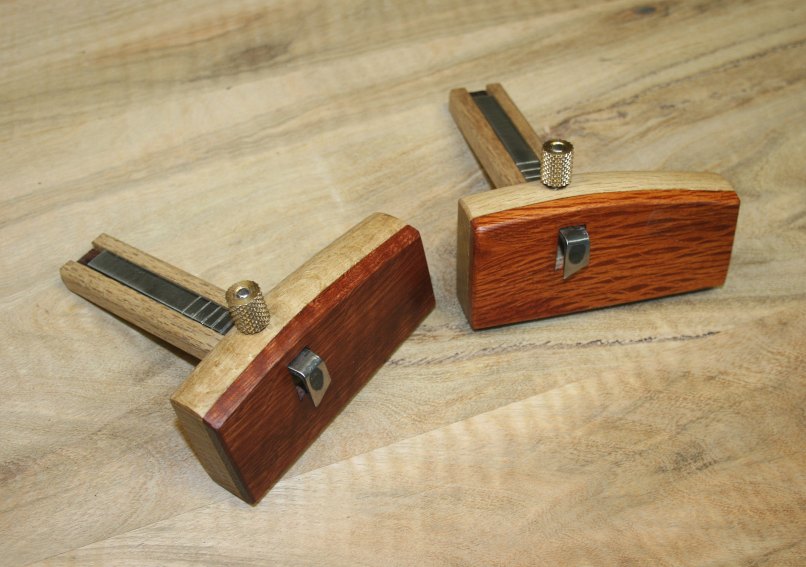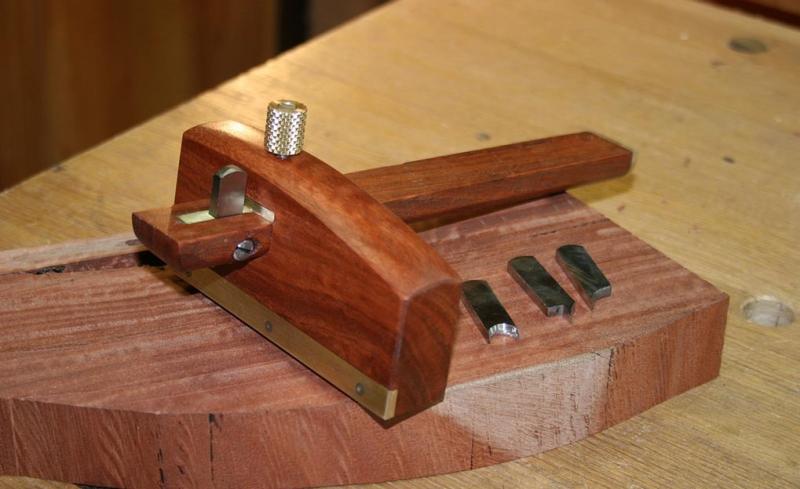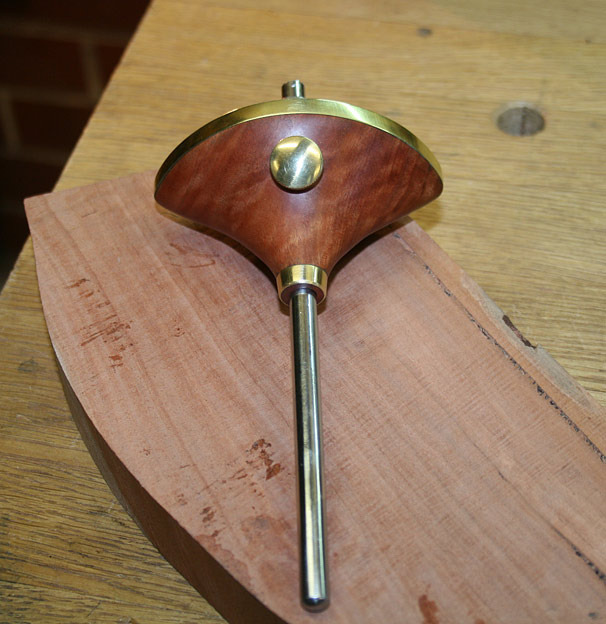Over in another thread, discussion veered onto the relative merits of marking gauges with wheels versus those with pins. Custard asked if anyone (maybe me) knew the age of one he had seen on eBay. Rather than divert the other discussion, I thought I'd start a fresh thread on the discussion.
Note that it would be impossible to data a single gauge - the standard designs stayed in production for a very long time. So let's try and see when wheeled gauges were introduced.
One easy way to start answering a question like this is to go to datamp.org. It's a marvellous, collaboratively compiled database of tool patents, mostly American.
Querying it by type of tool, one can see all entries for layout tools - (2,414) / marking gauges / (350) / wheeled marking gauges (17).
The earliest is from 1865 and has a wheeled cutter in an ordinary wooden body. The patent claim was for the way the cutters were fixed, not for the use of a sharpened wheel. So I would assume that sharpened wheel cutters were already in widespread use and not in themselves protected by another patent.

An 1871 gauge patent showed the wheel cutter again, on the very end of the wooden stem, so it could work in confined spaces.
The earliest drawing in the datamp list of a gauge with a metal stem and a wheel is this one - Barrett's patent - http://datamp.org/patents/advance.php?id=85&set=7 - which was a double gauge, and was widely made and sold, by Goodell-Pratt and others. Again, the patent claim is not about the wheels, but the way that two heads are fitted into one stock.
One of the earliest catalogues that I have a scan of is from Henry Osborn of Newcastle and Southampton, from about 1898, and it includes this American gauge:

Note that it was an expensive import - an ordinary wooden two-pin mortice gauge was only 1s 8d (or 3s 3d for the top of the range ebony option. ) The most basic, single pin gauge was only 3d.
The Tyzack catalogue of 1908 shows what I think is the same gauge, alongside a three bar version, but no single stem option. It also lists superficially similar metal gauges by Stanley, but these all use a very small pin.
So, overall, and guessing quite a lot, I would think that the use of metal-stemmed gauges with a wheel instead of a pin started in the latter part of the nineteenth century, as a relatively expensive option, imported from the USA, aimed at the woodworker who wanted something a bit more special than the common tool. Not much has really changed, has it?!
PS: Looking again at the one on ebay, I reckon it's user made. It would only need school metalwork level skills and equipment, and also the thumbscrew looks as if it has been adapted by soldering a wing onto a standard slotted screw - normal for home made but not what you would expect on a commercial tool.
Note that it would be impossible to data a single gauge - the standard designs stayed in production for a very long time. So let's try and see when wheeled gauges were introduced.
One easy way to start answering a question like this is to go to datamp.org. It's a marvellous, collaboratively compiled database of tool patents, mostly American.
Querying it by type of tool, one can see all entries for layout tools - (2,414) / marking gauges / (350) / wheeled marking gauges (17).
The earliest is from 1865 and has a wheeled cutter in an ordinary wooden body. The patent claim was for the way the cutters were fixed, not for the use of a sharpened wheel. So I would assume that sharpened wheel cutters were already in widespread use and not in themselves protected by another patent.

An 1871 gauge patent showed the wheel cutter again, on the very end of the wooden stem, so it could work in confined spaces.
The earliest drawing in the datamp list of a gauge with a metal stem and a wheel is this one - Barrett's patent - http://datamp.org/patents/advance.php?id=85&set=7 - which was a double gauge, and was widely made and sold, by Goodell-Pratt and others. Again, the patent claim is not about the wheels, but the way that two heads are fitted into one stock.
One of the earliest catalogues that I have a scan of is from Henry Osborn of Newcastle and Southampton, from about 1898, and it includes this American gauge:

Note that it was an expensive import - an ordinary wooden two-pin mortice gauge was only 1s 8d (or 3s 3d for the top of the range ebony option. ) The most basic, single pin gauge was only 3d.
The Tyzack catalogue of 1908 shows what I think is the same gauge, alongside a three bar version, but no single stem option. It also lists superficially similar metal gauges by Stanley, but these all use a very small pin.
So, overall, and guessing quite a lot, I would think that the use of metal-stemmed gauges with a wheel instead of a pin started in the latter part of the nineteenth century, as a relatively expensive option, imported from the USA, aimed at the woodworker who wanted something a bit more special than the common tool. Not much has really changed, has it?!
PS: Looking again at the one on ebay, I reckon it's user made. It would only need school metalwork level skills and equipment, and also the thumbscrew looks as if it has been adapted by soldering a wing onto a standard slotted screw - normal for home made but not what you would expect on a commercial tool.






































